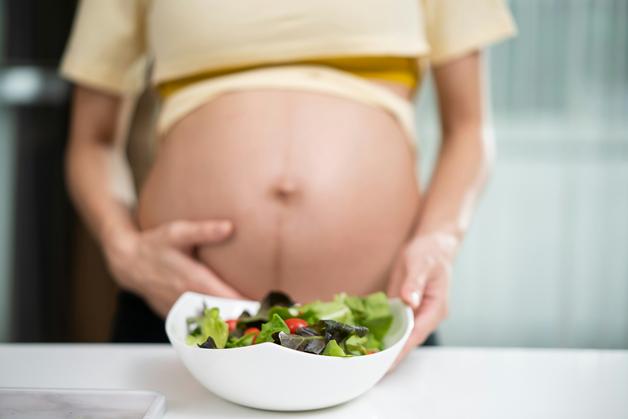Navigating pregnancy can feel like trying to decode a foreign language—every bite, every craving seeming to spark a new round of questions. What counts as safe nourishment and what falls into that uneasy category of “forbidden foods during pregnancy”? Many parents juggle science, well-meant advice, and their own instincts, all while handling the physical and emotional changes unique to this period. The push and pull between what’s forbidden and what’s actually risky can create confusion, sometimes even unwarranted guilt. For some, the fear of listeria, toxoplasmosis, or mercury looms large, while others are overwhelmed by the blizzard of recommendations. Balance emerges from understanding not only what to avoid, but why, grounded in evidence, medical clarity, and a healthy respect for your own decisions. Empowerment, after all, stems from knowing you can protect your baby without sacrificing the pleasures that food, tradition, and routine bring.
Why are forbidden foods during pregnancy a concern?
The phrase “forbidden foods during pregnancy” often lands with dramatic weight, yet it’s more than a badge for dietary discipline—it is a series of evidence-based warnings designed to reduce sometimes invisible risks. Let’s shine a light on the body’s biological shifts. Pregnancy adjusts immune function, dampening certain defenses to tolerate the developing fetus (an ironic vulnerability in the name of protecting life). A pathogen or toxin that slides by unnoticed in everyday life can bypass these weakened barriers, passing straight to the developing baby. The concept may sound abstract, but the numbers are real: while listeriosis affects one to two pregnancies in ten thousand, its severe fetal consequences make even small risks matter.
Why such vigilance over raw cheeses or sushi? It’s not about culinary puritanism, but rather the documented potential for
Listeria monocytogenes,
Toxoplasma gondii, and
Salmonella to cause life-altering infection. Rare, often silent in mothers, these pathogens have a knack for silent transmission—crossing the placenta, sometimes causing miscarriage, sometimes triggering developmental delays or severe illness at birth. Meanwhile, toxins like mercury—found in larger predatory fish—penetrate directly into fetal neural development, laying the groundwork for subtle, sometimes irreversible harm.
Yet knowledge is liberating. Something as simple as choosing pasteurized dairy over its raw-milk relatives, or thoroughly cooking a steak, can turn a high-risk bite into a confident choice. The forbidden foods during pregnancy are less about deprivation and more about reshaping the familiar into forms that honor both safety and satisfaction.
The science behind forbidden foods during pregnancy
High hygiene, low risk—such is the mantra for preventing infection during these months. But which foods truly matter? Here’s what robust research indicates:
- Listeriosis emerges predominantly in unpasteurized dairy, soft cheeses (think camembert, brie, blue varieties), artisanal charcuterie, and raw fish. Listeria is cunning: it survives and even multiplies at refrigerator temperatures, often without altering taste or smell. A single serving may suffice for transmission.
- Toxoplasmosis lurks in raw or undercooked meats and on unwashed fruit and vegetables. This parasite, largely invisible to healthy adults, can pass undetected but carries risk of malformations if acquired by a pregnant person.
- Salmonellosis, found in raw eggs and undercooked poultry, is more severe in pregnancy due to increased risk of dehydration and (rarely) fetal impact. Tiramisu prepared with raw eggs or a sunny-side-up breakfast suddenly becomes a calculated gamble.
- Mercury toxicity is particularly insidious. Larger fish—shark, swordfish, king mackerel, bigeye tuna—tend to bioaccumulate heavy metals. A single serving a week of high-mercury fish can raise exposure above recommended limits, threatening fetal neurological development.
- Alcohol stands alone: there is no “safe” dose, as even minimal consumption has been linked with neurodevelopmental impact.
Should all pre-prepared foods be excluded? Must you shun every soft cheese or sushi roll? Not always. The emerging consensus: most foods, when pasteurized or thoroughly cooked to at least 74-75°C (165°F), lose their danger. A mindful approach—interrogating labels, questioning storage, prioritizing freshness—protects more than a blanket avoidance policy.
Forbidden foods during pregnancy: your comprehensive checklist
Raw or undercooked meats and cold cuts
Here, vigilance reigns supreme. Beef tartare, rare steak, homemade pâté, fresh sausage—each dances on the edge of risk due to potential parasites or bacteria. The science is non-negotiable: only well-cooked options carry sufficient safety. For lovers of traditional charcuterie, heating until steaming neutralizes most menaces.
Raw, smoked, or high-mercury seafood
Picture sushi cravings thwarted by the words “forbidden foods during pregnancy.” Yet raw or cold-smoked fish, such as sashimi or smoked salmon, can harbor both listeria and parasites. High-mercury seafood like shark, swordfish, marlin, and king mackerel pairs delicacy with real hazard. Prefer baked or grilled salmon, sardines, or mackerel—rich in omega-3s but low on heavy metals.
Raw eggs and homemade dishes containing them
Homemade mayonnaise? Chocolate mousse? Their deliciousness is shadowed by the potential for salmonella. Unless using pasteurized eggs, these should wait until postpartum. Hard-boiled eggs or thoroughly set omelets stand as safe protein-rich alternatives.
Unpasteurized dairy and soft cheeses
Creamy camembert, farm-fresh brie, unpasteurized milk—tempting, but too often associated with listeria. The safe road: opt for hard cheeses or those made with pasteurized milk (the label is your ally). For the beverage-inclined, raw dairy drinks or juice should be strictly sidelined unless pasteurized.
Raw sprouts and unwashed produce
Tiny, unassuming alfalfa or radish sprouts sometimes become vectors for
Escherichia coli or
Salmonella, as moist growth conditions favor contamination. Cooking is the only surefire solution, while fruits and vegetables deserve a two-step ritual: generous running water rinse, and perhaps brief soaking in diluted vinegar for peace of mind.
Alcohol and naturally fermented beverages
The case is closed: any amount of alcohol, even in kombucha or non-distilled fermented drinks, is considered a risk during pregnancy. Ethanol’s unpredictable effect on embryonic and fetal tissues underlies rigorous abstinence recommendations.
Caffeine and chemical stimulants
International health authorities (including the World Health Organization) set a clear boundary at 200 mg of caffeine per day—roughly one regular cup of coffee, two cups of green tea. Exceeding this limit can impair fetal growth or trigger preterm birth. Enjoy, but measure—moderation is the only wise posture.
Heavily processed foods and food additives
While not universally branded as forbidden foods during pregnancy, highly processed snacks (laden with nitrites, aspartame, and hydrogenated fats) are increasingly studied for their metabolic impact on the developing child. Whenever possible, home-cooked meals crafted from whole ingredients are preferable.
Foods to approach with caution: the grey zone
Liver and organ meats
Nutrient-rich but dangerous in excess—liver brings a hefty dose of vitamin A (retinol) that risks neural tube defects when consumed too often. Occasional consumption is rarely an issue, but frequent indulgence warrants attention.
Pre-cooked deli meats and ready meals
Even after professional cooking, these foods can be recontaminated by listeria during storage or slicing. If enjoyed, they should be consumed immediately or reheated until piping hot—a strategy that reduces, though doesn’t eliminate, potential hazards.
Cooked seafood, vegetarian sushi, and maki
Cooked shellfish or fish, while generally much safer, can still cause issues if mishandled post-cooking. Only eat seafood from trusted, reliably cold-sourced establishments, and always avoid anything with suspect texture or odor.
Soy products
Plant-based eating often features soy front and center, but excessive exposure to phytoestrogens introduces theoretical risks to developing hormone systems. Mixing soy with dependable proteins—chickpeas, lentils, beans—supports balance without overexposure.
High-salt, high-fat, high-sugar foods
A steady diet of processed snacks, pastries, or sugary sodas is best reserved for rare treats. These foods raise the risks of gestational diabetes and hypertension—two conditions closely monitored by practitioners. A varied, home-prepared plate is preferred.
Practical, science-backed routines for every parent
- Always cook meat, fish, and eggs thoroughly. Verify the juices run clear and yolks are fully set.
- Segregate cutting boards and utensils: one for raw proteins, another for cooked or ready-to-eat foods.
- Wash fruits and vegetables under running water—brief vinegar soaks add an extra layer of confidence.
- Store raw and ready-to-eat foods separately, consume leftovers promptly, and date-check everything in your fridge.
- Seek out the word “pasteurized” on all dairy and egg packaging. Avoid any foods with ambiguous ingredient lists, especially when dining or shopping in bulk.
Experiment with new recipes: grilled low-mercury fish like trout or mackerel, hard cheeses, vibrant boiled eggs, and a rainbow of fresh, washed seasonal produce. For thirst, water, pasteurized juices, and known-safe herbal teas (chamomile, linden flower) fit the brief.
Navigating cravings: positive substitutions and peace of mind
Cravings are nearly universal during pregnancy—a testament to the body’s shifting needs and emotional landscape. If drawn toward forbidden foods during pregnancy, there’s no need for resignation; opt for equally satisfying, safer choices. Craving sushi? Order grilled or well-cooked rolls. Want cheese? Reach for pasteurized or hard cheese varieties. The snack arsenal is broad and inviting: fresh or dried fruit, crunchy vegetable sticks with hummus, nuts, boiled eggs, whole grain crackers with cheese, and smoothies prepped only from pasteurized milk and meticulously cleaned produce. Curiosity, color, and variety—not deprivation—support well-being, slowly transforming the landscape of forbidden foods during pregnancy into a field of confident choices.
Risks under the microscope: what every parent should understand
For those who appreciate numbers and precision, here’s a brief medical panorama:
- Listeriosis causes rare but profoundly severe consequences, particularly during the third trimester. One to two cases per 10,000 pregnancies, impacting the fetus in over a third of instances.
- Toxoplasmosis: if transmission occurs—especially early—long-term neurological and ocular consequences are possible.
- Mercury: a single weekly meal of high-mercury fish can double fetal exposure, threatening neural wiring and later cognitive abilities.
- Alcohol: even low levels are associated with impaired neurological and behavioral development (fetal alcohol spectrum disorders).
These risks, while low in probability, are high in consequence. The concept of forbidden foods during pregnancy is rooted in evidence-based harm reduction, always aiming to minimize potential long-term impact.
Reading food packaging like a health professional
Hidden threats rarely announce themselves. Labels—often crowded with ingredients and dates—deserve close attention. Look for “pasteurized” among dairy, cheese, juices, and egg-based products, avoid unlabeled items from open buffets or delis, and zero in on “use by” and “best before” indicators. Storage instructions matter: improper refrigeration turns even the safest food into potential risk.
Key Takeaways
- The main danger from forbidden foods during pregnancy revolves around specific pathogens (listeriosis, toxoplasmosis, salmonellosis) and toxins (mercury, alcohol, excess vitamin A).
- Careful cooking, thorough washing, separating food types, choosing pasteurized options, and diligent label inspection greatly diminish risk.
- Moderate caffeine, soy, food additives, and processed foods—balance trumps prohibition for long-term well-being.
- Personalized advice from healthcare professionals remains indispensable, especially in complex or ambiguous situations.
- Multiple resources exist to support families. For customized health advice and trusted questionnaires for your child’s well-being, explore the Heloa application.
Pregnancy, a time of profound transformation and adaptation, need not be defined by anxiety around forbidden foods during pregnancy. Instead, let knowledge open paths to reassurance, culinary delight, and empowered decision-making—one evidence-based bite at a time.
Questions Parents Ask
Can I eat fruit during pregnancy, and are there any types I should avoid?
Absolutely, fruit is a valuable part of a balanced pregnancy diet, bringing essential vitamins and fiber. However, it is important to wash all fruits thoroughly to remove any bacteria or pesticide residues that might be present on the skin. Some parents worry about certain fruits—like unripe papaya or pineapple—because they contain compounds that, in very high amounts, have been discussed for their possible impact on pregnancy. Fortunately, when eaten in moderation as part of a diverse diet, most fruits are perfectly safe once properly washed and prepared. If you have concerns about a specific variety, don’t hesitate to discuss them with a healthcare professional.
Are raw sprouts safe to eat while pregnant?
Raw sprouts, such as alfalfa, radish, and mung bean, may seem healthy, but they often grow in humid conditions that can promote bacteria like E. coli or Salmonella. During pregnancy, the immune system’s natural changes mean even mild foodborne illnesses can be more significant. Cooking sprouts until steaming is the safest way to enjoy them while expecting. If you’re out or unsure, choosing cooked or fully heated options is a reliable way to reduce risk.
How should I handle deli meats and pre-cooked foods to keep my pregnancy safe?
Deli meats, hot dogs, and other ready-to-eat products can sometimes carry bacteria if not handled or stored properly. If you wish to eat these foods, try to heat them until steaming hot—all the way through—before enjoying them. This extra step helps greatly reduce the risk of contamination. Also, be mindful to consume freshly prepared foods promptly and store leftovers safely. These small habits can make a meaningful difference and help bring peace of mind when planning meals.

Further reading:
 Further reading:
Further reading:








